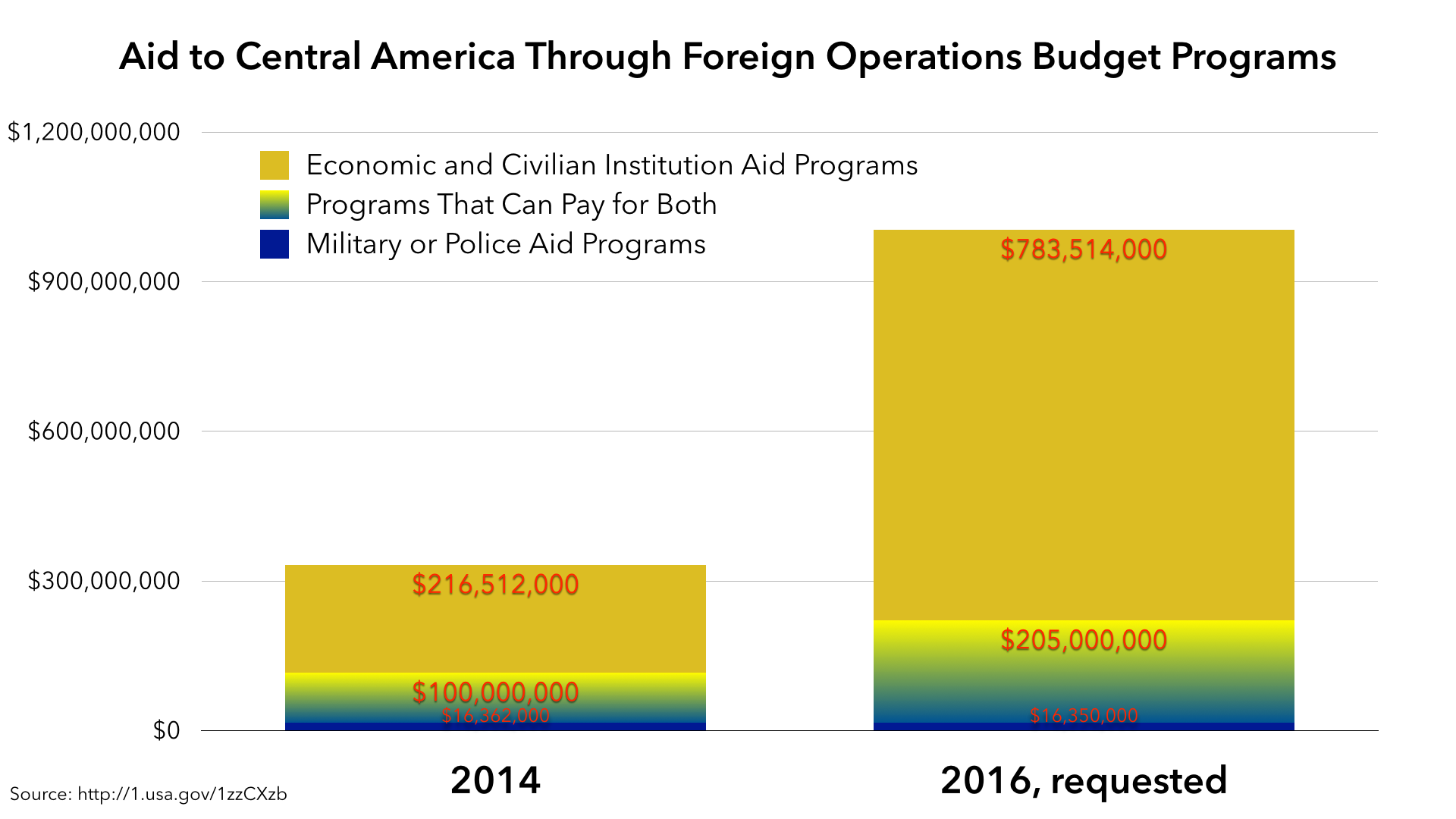As it makes its way through Congress, WOLA is closely following the Obama administration’s historic aid request to Central America, a proposal which—if invested wisely—could address the underlying factors that have fueled record migration from the region in recent years.
On February 2, the administration submitted its budget request for fiscal year 2016, which included a $1 billion fund for Central America. According to the administration, the aid is intended to help the governments of Guatemala, Honduras, and El Salvador address the violence, poor governance, and lack of economic opportunity driving migration from the region.
See all of WOLA’s work around the FY2016 Central America aid request:
- U.S. Increased Central America Aid, But It’s No Blank Check
An analysis on the final aid package for Central America
- Obama’s Billion Dollar Aid Request to Central America: How Has it Changed?
Update on current proposals for Central America - “Letter to to the Editor: Aid to Central America”
Adriana Beltrán’s Feb. 25 letter published in The New York Times - “What’s in the Billion-Dollar Aid Request for Central America?”
Factsheet by WOLA’s Adam Isacson - “After Decades of Neglect, a Promising New U.S. Strategy for Central America?”
Adriana Beltrán and Marc Hanson’s column in The Hill’s Congress Blog - “Obama’s $1 Billion Central America Request: Great News, Now to Invest Wisely”
WOLA Memorandum on Making the Most of U.S. Aid - “Obama Administration’s Budget Request for Central America a Welcome Step”
WOLA’s initial press statement on the aid proposal
The request—which would amount to a three-fold increase in funding for the region—represents a definite step in the right direction. It shows that the administration is serious about taking on the root causes that have made Central America one of the most violent places in the world.
As WOLA Senior Associate for Regional Security Adam Isacson pointed out in his in-depth breakdown of the aid request, the majority of the aid in this proposal—at least 80 percent—has been earmarked to support civilian institutions, civil society, and economic development as opposed to the militaries of these countries (see chart below). Because of this, the proposed aid package appears to recognize the need to move beyond a limited focus on security forces to one that seeks to strengthen the quality of Central American democratic institutions and invest in economic growth.

At the same time, this aid should not be a blank check. As WOLA’s Senior Associate for Citizen Security Adriana Beltrán has argued in WOLA’s initial reaction to the announcement, and stressed in a February 25 letter to the New York Times: “Tackling the rampant levels of violence and inequality in the region is not just a question of funding, but also one of smart investments.” To be effective, U.S. aid must be carefully channeled to countries or agencies that have demonstrated the political will to address corruption and institutional weakness.
This means that U.S. assistance and Central American government investments must be accompanied by far greater transparency than we have witnessed in the past. As WOLA laid out in a February 2 memorandum, Congress should ensure that the assistance package to Central America includes clear metrics to evaluate whether aid is going to effective and trustworthy partners, and whether it is achieving the desired results.
Fortunately, there appear to be a number of voices on Capitol Hill that are committed to making assistance to the region work. As WOLA Senior Associates Beltrán and Marc Hanson noted in a February 6 column published in The Hill’s Congress Blog, both Democrats and Republicans in Congress recognize the need to address the underlying factors that have fueled record migration from Central America in recent years.
